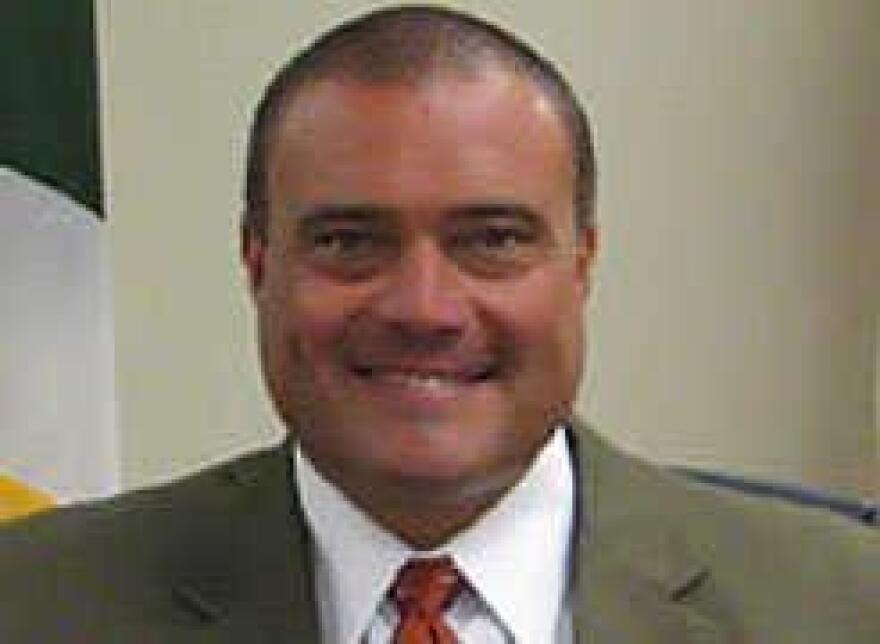Every school day, bright yellow buses transport thousands of students to class – some traveling across long distances to districts far from their homes, most others staying within a district’s boundaries, whether it is compact like Ladue or sprawling like Parkway or Rockwood.
And that doesn’t count homeless students or others whose route is so specialized that their transportation is by taxi, just one or two at a time.
No one is quite sure how much the whole system costs, but every dollar spent on transportation is money that can’t be spent on boosting student achievement.
A recent conference found widespread agreement that the system could be more efficient and more effective. Now, districts that may have been forced to expand busing when the law required it will try to come up with ways to do it on their own.
Devising a solution voluntarily won’t be easy, said Tim Ammon, who works with a national transportation company and led off the meeting of area superintendents and others at the offices of EducationPlus.
“Sharing is easy when you’re told to do it,” he said. “It’s not so easy when you elect to do it.”
Ammon noted that the St. Louis area already has experience in transportation planning -- what with the voluntary desegregation transfers that began in the 1980s, the more recent student transfers from Normandy and Riverview Gardens and the busing of students using services of the Special School District.
But based on comments from those who took part in the discussion, taking the next big step will require a lot of work. A first step, said Don Senti, executive director of EducationPlus, will be determining just how big transportation costs are for the area’s 300,000 public school students.
“We need to get a total number from at least St. Louis County and maybe St. Louis Public School districts, or maybe Jefferson County and St. Charles county, just to try to get our hands around how much we spend,” Senti said. “I think it's going to be amazing how much money we spend on this.”
Management and logistics
Ammon’s firm, TransPar, has worked with the Voluntary Interdistrict Choice Corp., which oversees the desegregation busing plan that began in the 1980s. It coordinates transportation rather than providing the actual buses.

He told the school officials at Tuesday’s meeting that districts that want to work together have to come to agreement on several issues, including who will establish policy, who will manage the system and who will actually provide the buses and drivers that take kids to school.
The solution doesn’t have to be all or nothing, Ammon emphasized. The goal is to gain whatever economies of scale are possible with better management and better logistics. But reaching those savings, he added, requires navigating among political, operational and financial risks. Coming up with answers is a lot easier than putting them into practice.
“It’s very easy, when we’re in our own job, to look at our own problem,” Ammon said. “Until we get up to five or 10 thousand feet and see the bigger problem, only then can we see some of the opportunities for cost savings and efficiency.”
Solving the problem, he said, is a matter of creating as much density of passenger traffic as possible. The higher the density, the lower the cost of transportation, so creating density where it doesn’t exist now can be a big money saver.
“If you have four neighboring districts with five kids each,” Ammon said, “a regional perspective looks at a total of 20, to create more options and opportunities. Maybe you can move from four buses to just two. That may not be change for the region as a whole, but it does change at the district level.”
Whatever solutions are devised, he added, districts are going to have to realize the tradeoffs. One may be simply the fact that a district’s name is no longer on the bus, so whatever sense of identity that brings can be lost. More troubling, he said, may be the fact that outsiders have power over the service your district is providing.
“If I’m sharing with someone else,” Ammon said, “then I’m losing control over what I’m doing.”
$150,000 for a bus or a house?
Ammon’s general concerns were brought down quickly to a more local, more practical level during the discussion after his presentation.
Many districts talked about homeless students who they are responsible for transporting. Senti said it has been a growing, persistent problem.
“We've talked for several years,” he said, “about how important it was to the kids, first of all, to get back to the school where they left, but also how unbelievably expensive it was to do that.”
Senti pointed out that Jennings has recently opened a house in the district where such students can live.

In Riverview Gardens, Superintendent Scott Spurgeon said that the costs for such students will be $300,000 this year and has gone up to as much as $500,000.
Add that to more than $500,000 it takes to transport transfer students to Mehlville and Kirkwood, he said, and that is money that doesn’t make its way into the classroom to help Riverview Gardens regain accreditation.
“If we were able to maximize those routes,” Spurgeon said, “we think we could utilize that money in our own district to help transport more kindergarten and first-grade students in our district.
“For us, it’s about maximizing efficiency and effectiveness to ensure that we are spending our dollars where we need to spend them, and retrieving the dollars that we could use in better ways and more efficient ways in our own district.”
And the general issue of the cost of transporting students out of their own districts was brought home by Barbara Fraser, education liaison to St. Louis County Executive Steve Stenger. She recalled that a superintendent once told her that sending a student to St. Charles County and back each day cost $150,000 for a whole school year – enough to buy a house so the student could live out there.
On the issue of homeless students, she added:
“It seems to me that everyone has a different problem, but it’s the same issue. How do you get your homeless kids to school? There’s got to be some consolidation here.”
John Nations, president and chief executive of the Metro transit system, said his buses could help in some areas, but their routes aren’t necessarily designed to go in and out of neighborhoods where schoolchildren live.
He said to a degree, particularly in more affluent areas, school transportation is a convenience not so much for students as it is for parents. If buses are available, they don’t have to get up to take their kids to school, Nations said.
“If you stop providing school transportation,” he added, “what’s the effect? For Parkway or Rockwood, all of the students are still going to show up. They’re going to get to school. That’s a very uncomfortable conversation from a policy perspective, but there are a whole lot of parents who don’t view it as a service for kids. They view it as a service for parents.”

Fraser pushed back at that characterization, saying that bus service isn’t necessary just in poorer districts. For middle-class families where both parents work, she said, students can’t get to school if the bus isn’t there to take them.
Answering concerns that the lives of students in poorer districts are constantly in flux, Ammon said that plans can still be modified when necessary.
“Just because the average kid is moving two and a half to five times a year doesn’t mean it’s like taking a deck of cards and throwing it on the ground every single day,” he said.
Noting that most school officials have heard complaints about multiple buses traveling down the same residential street twice a day, or buses that are only half-full, Ammon said the solution is efficiency.
“All we’re trying to do is re-use what we have as much as we possibly can,” he said.
Representatives of various districts and other agencies signed up to study the problem further and report back in the future.




